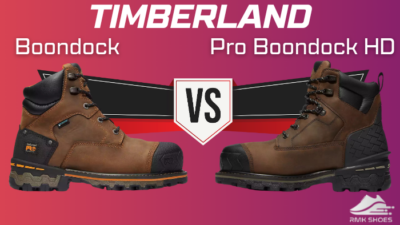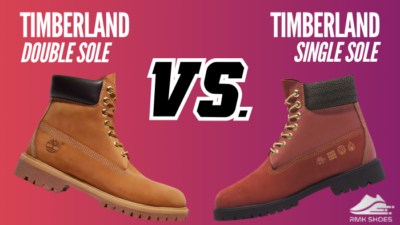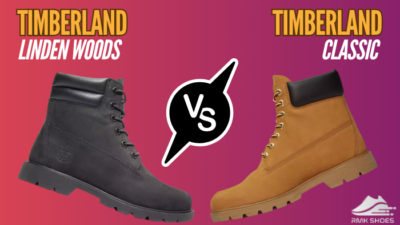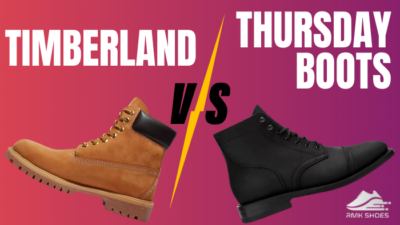Finding the right balance of cushion, flexibility, and protection in a running shoe can transform your miles.
As a seasoned runner, I can confirm that the On Running Cloudflow and Cloudflyer models offer responsive performance on various terrains.
After logging many miles in both Cloud-powered models, I’m reviewing how these popular shoes match up.
I’ll compare the cushioning technologies, the longevity of components, and the sizing/fit of Cloudflow and Cloudflyer midsoles. I’ll also determine which shoe is the better stable and natural everyday trainer for a neutral runner.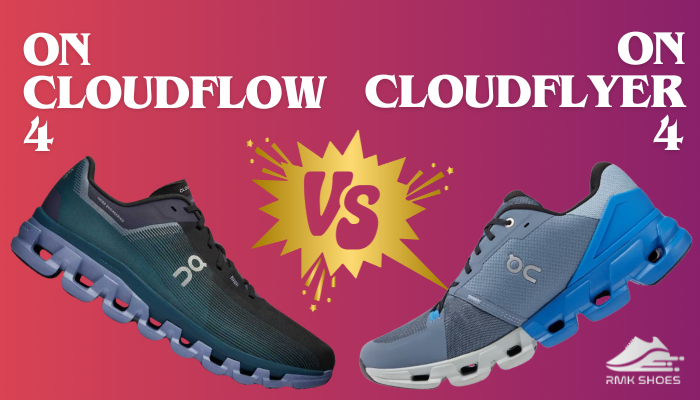
Therefore, let the comparison begin.
Overview of On Running Cloudflyer and Cloudflow Shoes
On Running, a Swiss brand has been shaping the running shoe scene with innovative designs and technology. Two standouts, Cloudflyer and Cloudflow, offer distinct running experiences.
The Cloudflyer, focused on stability, boasts a Max-cushioned midsole with dual-density foams. It supports pronation, ensuring a secure fit with its lacing system and reinforced heel counter.
Its breathable upper blends lightweight mesh and robust plastic/rubber overlays for style, albeit with a slightly heavier feel.
In contrast, the Cloudflow flaunts a sleek design focusing on versatility. When mentioning versatility, you can compare Cloudswift and Cloudflow.
The Cloudflow 4 features a dual-layer, dual-density midsole with Helion™ super foam and CloudTec® pods, offering a firm yet cushioned ride.
Also, the new speedboard enhances responsiveness, making it suitable for various paces. The upper, akin to the Cloud Boom Echo 3, provides comfort, though the $170 price may raise eyebrows compared to alternatives like the Adidas Adios 8.
After the general introduction to Cloudflyer and Cloudflow, let’s jump into the intricate comparison of their respective features.
Feature Comparison of On Cloudflyer 4 and Cloudflow 4
When choosing On Cloudflow 4 and Cloudflyer 4, evaluating their respective features thoroughly is essential. By comparing these two models side by side, you can gain valuable insights that will help you pick the ideal model.
| Feature | On Cloudflyer 4 | On Cloudflow 4 |
|---|---|---|
| Release Year | 2022 | 2023 |
| Cushioning | Comfortable & plush | Firm & low cushioning |
| Upper Materials | Engineered mesh with rubber overlays on the toe box and synthetic close-off materials in the rear portion of the shoe | Engineered woven upper |
| Midsole | Bigger dual-density CloudTec®, Zero-Gravity foam | Helion™ superfoam |
| Forward Propulsive Technologies | Speedboard® for next-level speed | Speedboard® for Irresistible forward-roll |
| Outsole | Durable rubber | Durable rubber |
| Breathability | Moderate | Great |
| Arch Support | Better | Good |
| Stack Height | Heel 29 mm, and Toe 18 mm | Heel 31 mm, and Toe 23 mm |
| Drop | 11 mm | 8 mm |
| Weight | 10.6 ounces (300 g) | 8.3 ounces (235 g) |
| Stability | Moderate | Great |
| Size | True to size | True to size |
| Fit | Comfortable fit, with medium-toe box | Overall snuggly fit |
| Price | $170 | $160 |
| Recycled Materials | 25-30% of the total build | 25% of the entire build |
| Best For | Long runs, stable daily training, recovery runs, walking | Speedwork, long distance |
While the Cloudflow 4 and Cloudflyer 4 are exceptional running shoes, this table provides a clear overview of their distinguishing features. Now, let’s discuss the core differences between these two models in more detail.
Primary Differences between On’s Cloudflow 4 and Cloudflyer 4
On’s, Cloudflow 4 and Cloudflyer 4 are exceptional running shoes with unique features and benefits to cater to different running styles and preferences.
In my personal experience, both models are highly reliable and comfortable, providing an extraordinary running experience. But they have some distinct differences.
Here are the main differences between Cloudflow 4 and Cloudflyer 4:
1. Design Philosophy
In Cloudflow 4, the focus is on speed and agility. The design is sleek and lightweight, creating a dynamic and responsive feel. It has a roomy toe box that enhances natural foot splay, ensuring comfort and flexibility.
The padded tongue prevents discomfort during runs, while the heel counter provides stability and support for a secure fit. That said, I also used the Cloud X and Cloudflow back-to-back to test the tongue, and the tongue of the Cloud X feels better.
With On’s signature Speedboard technology, each stride propels you forward, boosting speed and efficiency.
On the flip side, On’s Cloudflyer 4 emphasizes stability and support.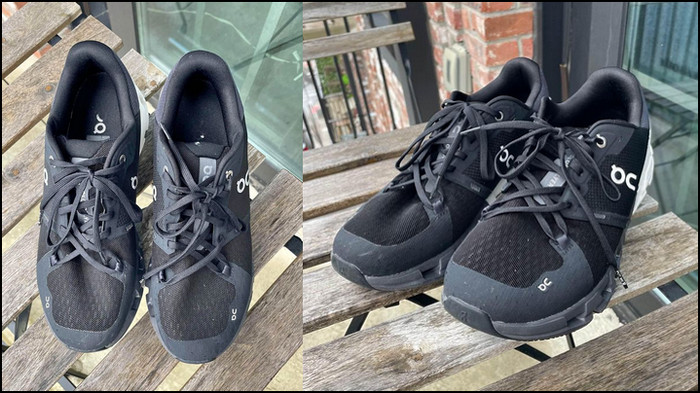
Its design includes a wider platform and extra support features for runners needing enhanced stability. The toe box maintains space for toe splay while ensuring a secure fit.
Also, the cushioned tongue adds comfort and reduces pressure on the top of the foot. The stable heel counter locks the foot in place, minimizing unwanted movement. Speedboard technology offers a responsive and energized ride while supporting a steady gait.
Regarding the design elements of Cloudflow, my overall impression was favorable. Notably, the Speedboard contributed to a noticeable increase in my running speed and helped me maintain a consistent pace.
2. Upper Materials and Quality
The On Cloudflow 4’s upper is lightweight and sleek, made with Engineered woven upper, resembling the Cloud Boom Echo 3.
It feels even thinner, offering a pleasant, lightweight sensation. The shoe fits true to size, is not overly plush in the heel, and provides a breathable and comfortable experience. Also, it uses 75% recycled polyester upper.
The design strikes a balance between a secure lockdown and a non-plush heel.
Meanwhile, the Cloudflyer 4’s upper emphasizes breathability and support with a two-material approach. Its front half features lightweight and breathable engineered mesh, soft and comfortable. Strong rubberized plastic overlays in the toe guard ensure durability.
However, the back part utilizes synthetic closed–off material for enhanced lockdown, especially around the midfoot.
While the front offers excellent breathability, the back, with its thick tongue, provides a slightly warmer experience.
The well-padded, non-gusseted tongue may move around due to the absence of gusseted, but it feels comfortable.
Overall, the Cloudflyer 4’s upper provides a blend of breathability, comfort, and stability.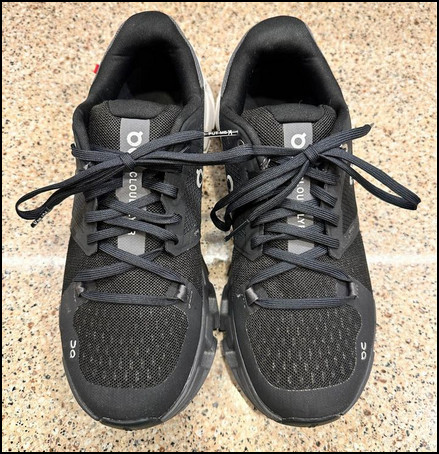
3. Midsole Cushioning
The Cloudflow 4 brings a dual-layer midsole using Helion super foam, CloudTech pods, and a new Speedboard for a responsive and adaptable ride.
The midsole strikes a balance between ground feel and cushioning, ensuring a firm yet comfortable experience suitable for different paces.
Additionally, the midsole incorporates a spoon–like structure called Spoodboard, which assists in maintaining your speed and motivates you to continue running forward.
In contrast, the Cloudflyer 4 features a Max cushioned midsole with dual–density foams, incorporating soft Helion super foam in the front half and denser Zero Gravity foam in the back.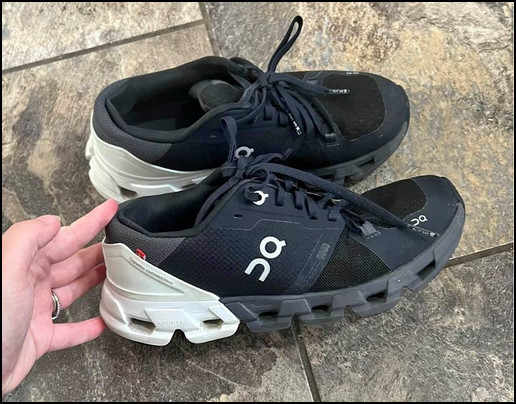
This setup, along with CloudTech units and a speedboard, supports pronation, creating a stability shoe. While the midsole is firm, it delivers a secure and locked-in feel, aligning with the shoe’s focus on stability.
The midsole of the Cloudflyer 4 is interesting. It strategically positions the cushioning material, achieving an ideal balance between softness and bounce. This innovative design enables the shoes to maintain stability without sacrificing comfort.
4. Outsole Traction
Cloudflow 4 opts for a CloudTec outsole with individual Cloud elements arranged in a pattern. This design aims to deliver a cushioned landing while encouraging a responsive toe-off.
The Cloud elements in the outsole compress and adapt to the runner’s movement, creating a dynamic and agile feel. The outsole construction complements the Cloudflow 4’s versatile and responsive characteristics.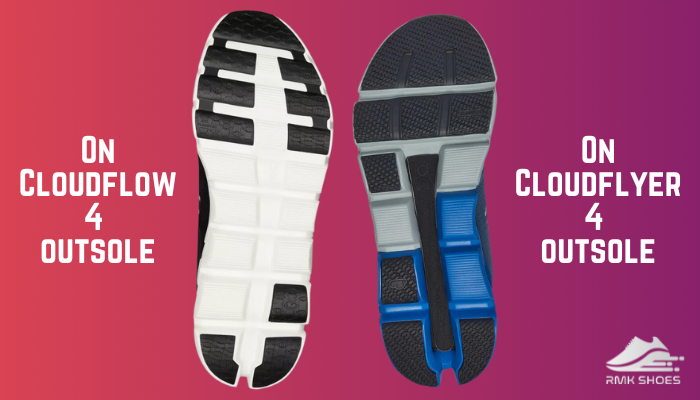
On the flip side, the Cloudflyer 4 incorporates a layout of Cloud elements on the outsole, blending support and cushioning strategically.
These Cloud elements are placed to ensure stability and responsiveness, especially during pronation. The durable rubber outsole enhances traction and longevity, providing a dependable grip on various surfaces. This design aligns with the Cloudflyer 4’s emphasis on stability and support.
Again, in my perspective for the outsole section, the winner is On’s Cloudflyer 4. I find it dynamic and provides ample traction over many terrains.
5. Performance Evaluation
The Cloudflow 4 has become my trusted companion for city runs thanks to its responsive cushioning and forward-propelling feature.
Its noticeable responsiveness on pavements gives a springy feel to each stride.
Also, in the Cloudflow 4, the Speedboard is engineered to deliver a snappy and explosive feel. It works harmoniously with the shoe’s lightweight construction and cushioning to provide a swift and efficient ride.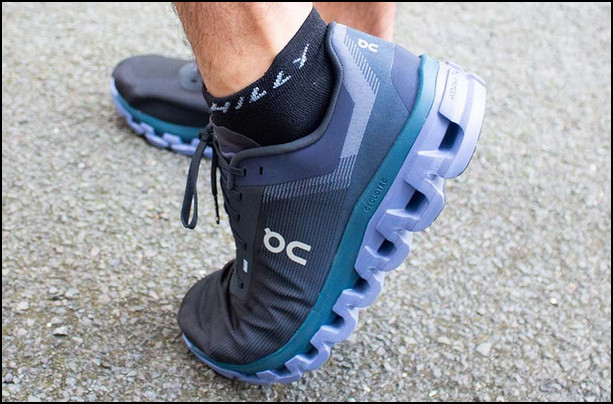
In contrast, the Cloudflyer 4, boasting plush cushioning, is my top pick for long-distance runs. The double layer of CloudTec® ensures a comfortable ride, even during marathons. I value the shoe’s stability, helping me maintain a steady pace throughout my runs.
Additionally, the Cloudflyer 4 features an adapted Speedboard designed to offer enhanced stability and support without compromising the smooth and responsive ride experience.
It works in conjunction with the shoe’s wider platform and additional support features to ensure a balanced and secure running experience.
Both shoes deliver excellent performance, each shining in its own way. The Cloudflow 4 excels in urban environments for speed runs, while the Cloudflyer 4 is the go-to for long-distance runs.
6. Comfort and Overall Fit
The Cloudflow 4 gives a sock-like feel, snug and close to the foot. Its cushioning is firm, offering a responsive connection to the ground. It is ideal for tempo runs and faster workouts, providing a lightweight, locked-in sensation.
However, it might not be your top choice for longer runs or if you seek plush comfort.
Conversely, the Cloudflyer 4 prioritizes comfort and a plush experience. You can also check the comparison of Cloudswift 3 and Cloudflyer 4 cause both are well-cushioned shoes, but Cloudswift 3 is not totally for running.
The cushioning is softer and forgiving, delivering a more cushioned ride. Exceptionally comfortable, the plush cushioning absorbs impact, ensuring a smooth and enjoyable run. The shoe’s roomier fit allows for natural foot splay, catering to various foot shapes.
On paper and in real life, the comfort Cloudflyer 4 provides – is exceptional.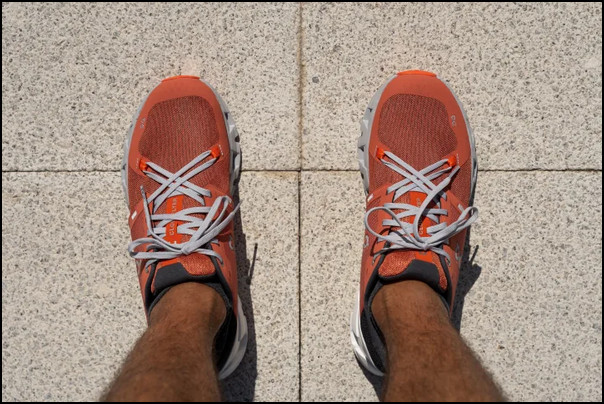
7. Size & Weight
Both shoes maintain their true-to-size fit so that you can stick with your usual number without any adjustments.
However, there are notable distinctions.
The Cloudflow 4 wraps snugly around your foot, akin to a cozy sock.
In contrast, the Cloudflyer 4 provides a slightly roomier toe box, offering your toes some welcomed breathing space. Which is a valuable feature on those extended runs when your feet may experience swelling.
Weight becomes a differentiating factor for Cloudflow 4 and Cloudflyer 4.
The Cloudflow 4 is a lightweight champion, tipping the scales at 8.3 ounces. This makes it an ideal choice for brisk workouts and tempo runs, imparting that desired feeling of lightness on your feet.
Meanwhile, the Cloudflyer 4, weighing 10.6 ounces, carries a bit more heft. Yet, this additional weight brings a plush cushioning, transforming it into a comfortable cruiser tailored for longer distances.
Weight-wise, the winner is Cloudflow 4, but I also loved the cushioning of Cloudflyer 4.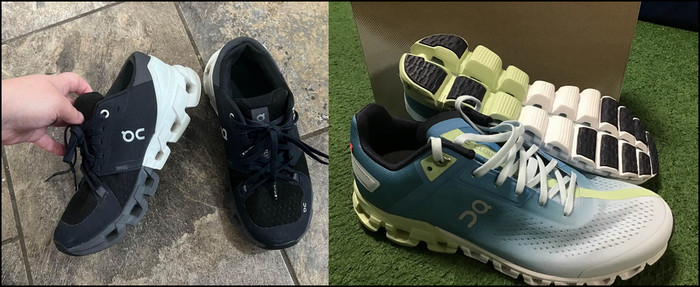
8. Price and Value
In terms of pricing, the Cloudflow 4 comes in at $160, while the Cloudflyer 4 sets you back $10 more at $170. While seemingly a modest difference, every penny counts, doesn’t it?
Value Proposition: Here’s where the comparison gets intriguing.
But when you are comparing the value, then it gets intriguing. For runners emphasizing lightweight performance and a snug fit, the Cloudflow 4 offers excellent value at $160. It is ideal for those looking to pile on the miles without the burden of extra weight.
However, if you lean towards plush comfort and prioritize longer distances, the additional $10 investment in the Cloudflyer 4 might be justified. The extra cushioning could be a lifesaver for your feet and your wallet during those marathon adventures.
Mentioning the price, the Cloudflow 4 comes cheaper, but when you consider the value, I believe the winner is Cloudflyer 4.
Benefits and Drawbacks of On Running Cloudflow 4 and Cloudflyer 4
When pondering between On Cloudflow 4 and Cloudflyer 4, it’s essential to evaluate the upsides and downsides of each model.
Here are some notable strengths and weaknesses:
Cloudflow 4
- »Lightweight design for a fast and responsive running experience.
- »Firm cushioning provides a connected feel and promotes efficient stride.
- »Breathable mesh upper keeps your feet cool and comfortable.
- »Durable rubber outsole with CloudTec® technology offers excellent traction.
- »Limited cushioning may be insufficient for longer runs.
- »Snug fit may feel tight for those with wider feet.
Cloudflyer 4
- »Plush cushioning offers superior comfort and impact absorption.
- »The roomy design fits many foot shapes, allowing natural foot movement.
- »Increased stability and support, making it suitable for long-distance runs.
- »Better heel support and cushioning.
- »TPU overlays on the Toe box enhance protection.
- »Durable compared to Cloudflow 4.
- »Slightly heavier compared to the Cloudflow 4.
- »Pricer than Cloudflow 4.
On Cloudflow 4 vs Cloudflyer 4: Which is The Best for Running?
Both models showcase On Running’s innovation, featuring unique elements like CloudTech units and Speedboards.
The Cloudflyer excels in stability and lockdown, while the Cloudflow stands out for versatility, offering a balance of ground feel and cushioning. Whether seeking support or a responsive ride, On Running’s Cloudflyer and Cloudflow cater to different preferences in the running community.
While both deliver a smooth, well-cushioned feel across miles thanks to responsive CloudTec soles, the Cloudflyer 4 ultimately edges out its sibling.
The Cloudflyer is more all-around thanks to its grippy trail-ready outsole lugs. It offers a more secure midfoot wrap for stability during faster efforts and has proven slightly more durable over long-term wear testing.
For runners seeking a lightweight, forgiving neutral shoe ready to take on any run or terrain, the Cloudflyer 4 can’t be beaten – it’s the clear winner in this battle of the Cloud shoes.
FAQs
How does the fit differ between the Cloudflow 4 and the Cloudflyer 4?
The Cloudflow 4 hugs your foot for a locked-in feel, similar to a sock. On the other hand, the Cloudflyer 4 features a more spacious toe box, accommodating wider feet and reducing the risk of swelling during extended runs.
What are the main differences between Cloudflow 4 and Cloudflyer 4?
The Cloudflow 4 is lightweight and ideal for speed-focused runs, while the Cloudflyer 4 offers increased stability and cushioning, making it suitable for long-distance runs and enhanced comfort.
Which shoe is better for a faster run, Cloudflow or Cloudflyer?
The Cloudflow 4 is designed for a fast and responsive running experience due to its lightweight design, firm cushioning, and durable rubber outsole with CloudTec® technology. Whereas the Cloudflyer is better for long-distance running at a medium tempo.

